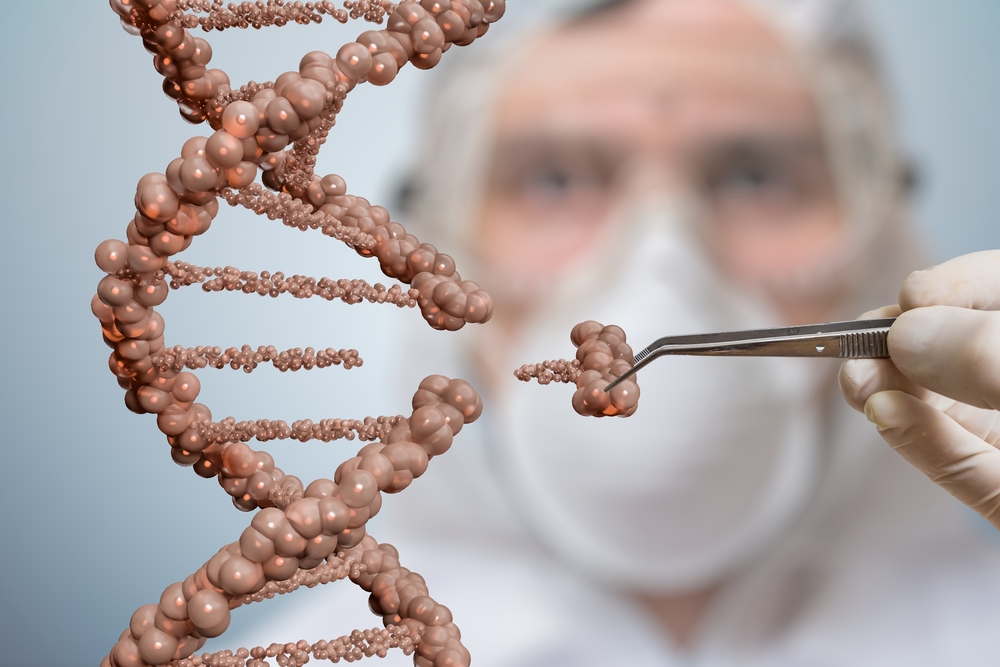Gene Editing Restores Dystrophin in Pig Model of Duchenne and Patient Cells, Study Reports

The gene-editing tool CRISPR/Cas9 was used to correct defects in the DMD gene and restore dystrophin protein production, lengthening the lives of pigs in a model of Duchenne muscular dystrophy (DMD) and altering heart cells from a patient to make them less prone to irregular beats, researchers report.
The scientists believe their work — the first to show “therapeutic success” in the large animal model of Duchenne they created— could be refined for use in people, and possibly be a long-lasting treatment.
Their study, “Somatic gene editing ameliorates skeletal and cardiac muscle failure in pig and human models of Duchenne muscular dystrophy,” was published as a letter in the journal Nature Medicine. (Letters to this journal also go through a peer-review process.)
A type of gene therapy, CRISPR/Cas9 is an editing tool that can be used to remove, add, or change a portion of the DNA sequence of a gene of interest. It is based on a “cut-and-paste” mechanism, in which the enzyme Cas9 is guided toward DNA with the help of a small RNA molecule that specifically recognizes the DNA sequence selected for removal.
Researchers at the Technical University of Munich (TUM), in Germany, and colleagues used CRISPR/Cas9 to remove a defective portion of the DMD gene sequence in their pig model of DMD, and in patient-derived induced pluripotent stem cells (iPSCs) carrying the same genetic defects.
Of note, DMD is the gene that provides instructions to make dystrophin, a protein essential for muscles to contract and relax without injury; mutations in this gene prevent its production. iPSCs are fully matured cells that can be reprogrammed back to a stem cell state, where they are able to grow into any type of cell.
By removing this portion, the team successfully restored the gene’s reading frame, enabling muscle cells in the animals and iPSCs from the patient to produce a shorter, but functional, dystrophin protein. (A reading frame here refers to the specific way nucleotides — the building blocks of DNA — in the gene sequence are grouped and “read” together, providing proper instructions to make a working protein.)
Specifically, this shorter form of dystrophin lacked exons 51 and 52 of the DMD gene. The largest in human genome, DMD has 79 exons, the small bits of DNA that are linked together for protein production.
In pigs given intramuscular (into muscle) injections of the CRISPR/Cas9 construct, the shorter version of dystrophin was found in several muscles, including those of the heart and diaphragm. Treated animals were less prone to heart arrhythmias — irregular heartbeats — and had a longer lifespan compared to untreated pigs.
“The porcine DMDΔ52 model displayed high mortality: 61.6% (45/73) of the affected males died within the first week after birth and none survived longer than 105 d [days, less than 3.5 months],” with most lost to “sudden cardiac death,” the researchers wrote. Treated pigs in this model lived up to 134 days, or between four and five months.
“Our results are very promising, since for the first time, we have now been able to demonstrate therapeutic success in a clinically relevant large animal model,” Maggie Walter, MD, a neurologist at the Ludwig Maximilian University of Munich and a study co-author, said in a press release.
In muscle progenitors and heart cells derived from patient iPSCs, the CRISPR/Cas9 construct improved the formation of skeletal muscle fibers in a lab dish, lowered susceptibility to arrhythmia, and restored calcium balance in heart cells. All these changes lessen the risk of an irregular heartbeat, the study noted.
Investigators believe their work may set the foundation for new ways of treating Duchenne muscular dystrophy. Unlike other treatments, gene correction mediated by CRISPR/Cas9 has the potential to offer a lifelong benefit, they said.
“The ability of Cas9-mediated exon excision to improve DMD pathology in these translational models paves the way for new treatment approaches in patients,” the scientists wrote.
“Muscle and heart cells are long-lived cell structures. One half of all myocardial [cardiac muscle] cells remain functional from birth throughout the entire life cycle of a human being,” Christian Kupatt, MD, cardiologist at university hospital TUM Klinikum rechts der Isar and the study’s senior author, said in the release.
“The genome of a cell is used for protein biosynthesis as long as the cell is alive, and once a cell has been affected by the therapy, it remains corrected. So if we change the genome of a myocardial cell, the correction is a long-term success, in contrast to the results of previous methods,” Kupatt added.






